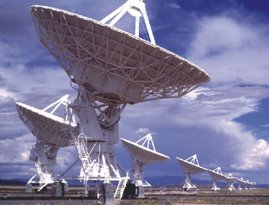
Thursday, May 14, 2009
Kepler is working!
In less than three years, we will have an estimate of the number of Earthlike planets in our galaxy!
http://www.scientificamerican.com/blog/60-second-science/post.cfm?id=kepler-spacecraft-begins-its-search-2009-05-13
The Kepler Space Telescope is looking down the Orion-Cygnus Spiral Arm, the spiral arm in which our solar system is located. This is important in a subtle way. Our solar system is located about 25,000 light years from the galactic core. Too close to the core and there would be frequent supernovae that would sterilize planet surfaces. Too far from the core, and the amounts of heavier elements necessary for life fall to very low levels. We therefore would want to know as a priority what is in our own spiral arm (not that we could see much farther with current technology anyway).
http://en.wikipedia.org/wiki/File:Milky_Way_Arms.svg
Here is what that area looks like in the context of the whole Milky Way.
http://my.execpc.com/60/B3/culp/astronomy/Summer/milkyway.html
http://en.wikipedia.org/wiki/Milky_Way
Johannes Kepler
http://en.wikipedia.org/wiki/Kepler
While the Texas School System dumbs down textbook language about evolution and tries to sneak creationism into schools, this is the kind of exponential advance that is happening elsewhere... and while Texas grapples with an idea from 1859 because it just cannot get over the idea that humans are mortal, the Chinese are laughing all the way to the bank and into the 21st century.
http://www.sciencefriday.com/program/archives/200904101
http://www.sciencefriday.com/program/archives/200806135
The next step would be to find planets with oxygen-nitrogen atmospheres like that of the Earth. We would then be fairly certain that such a planet contains a lot of life as we know it.
http://www.scientificamerican.com/blog/60-second-science/post.cfm?id=kepler-spacecraft-begins-its-search-2009-05-13
The Kepler Space Telescope is looking down the Orion-Cygnus Spiral Arm, the spiral arm in which our solar system is located. This is important in a subtle way. Our solar system is located about 25,000 light years from the galactic core. Too close to the core and there would be frequent supernovae that would sterilize planet surfaces. Too far from the core, and the amounts of heavier elements necessary for life fall to very low levels. We therefore would want to know as a priority what is in our own spiral arm (not that we could see much farther with current technology anyway).
http://en.wikipedia.org/wiki/File:Milky_Way_Arms.svg
Here is what that area looks like in the context of the whole Milky Way.
http://my.execpc.com/60/B3/culp/astronomy/Summer/milkyway.html
http://en.wikipedia.org/wiki/Milky_Way
Johannes Kepler
http://en.wikipedia.org/wiki/Kepler
While the Texas School System dumbs down textbook language about evolution and tries to sneak creationism into schools, this is the kind of exponential advance that is happening elsewhere... and while Texas grapples with an idea from 1859 because it just cannot get over the idea that humans are mortal, the Chinese are laughing all the way to the bank and into the 21st century.
http://www.sciencefriday.com/program/archives/200904101
http://www.sciencefriday.com/program/archives/200806135
The next step would be to find planets with oxygen-nitrogen atmospheres like that of the Earth. We would then be fairly certain that such a planet contains a lot of life as we know it.
Subscribe to:
Post Comments (Atom)

No comments:
Post a Comment